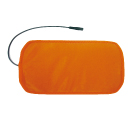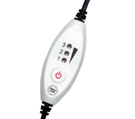For most clinicians getting GPs, or indeed any other clinician, to refer to them seems highly desirable. However I consistently hear the age-old complaint from clinicians that ‘GPs just aren’t interested in them’. Why is that?
The answer is not that GPs are interested per se, rather the fundamental problem is that most clinicians simply fail to establish relationships with their local GPs.
In this post I will tell you the Number One mistake clinicians make when seeking to establish relationships with GPs and outline 3 steps which MAY create the relationships you seek (and in turn get you referrals).
So if you want to engage GPs there are two important questions –
1/ Why should they be engaged by you?
2/ How are you going to get your message to connect with them?
To begin with I’ll assume you have a compelling reason for GPs to be interested in you, but if you don’t, you can still establish a connection as the first choice treatment provider in your field.
Whatever your engagement means, the number one mistake clinicians make is to give up on establishing a relationship too soon.
So many clinicians have the unrealistic expectation of getting an instant response or, for one or two letters (or other communication means) to lead to the establishment of a meaningful relationship with their GPs. Relationships don’t work like that.
The three pillars of any relationship are well documented – Know, Like, Trust.
My brother-in-law is a GP and so are some of my old school friends. They are snowed under with paper work, sales messages, drug company reps, government initiatives and of course patients!
If you want to engage GPs, you have to let them get familiar with you over time.
Here are 3 simple ways for you to engage GPs:
1/ Case History – If you successfully treat a patient, write to their GP with a brief case history. You should have their GP name in your notes, but if you don’t then make sure you get it! This will really set you apart from your competitors and the GP will remember your name and respect you.
Include a business card since whilst we tend to throw away mail, if we like the essence of a letter we will keep a business card. Include an open invitation for them to visit the clinic at any time (they may need treatment themselves!). So start by producing one patient case study a month and build from there.
Add the contacts to your database of “influencers” and send them a Christmas Card or Happy New Year card. They get hundreds of Christmas cards so why not be different – send a Happy New Year card as in all liklihood yours will be the only positive message in the new year mail … be different!
2/ Newsletters – A 2 sided A4 newsletter sent quarterly should not be too much to ask of any clinic to produce. All your contact details will be there and over time you will create familiarity if you have some interesting content.
3.a/ GP Talks – GPs need CPD and regularly get together. If you have a compelling service, programme or something you are particularly good at, they will be interested in a short presentation (offer to bring lunch, they expect this!). The talk is a great way to engage GPs but if what you offer is not discernibly different to what anyone else is offering, then you will probably get knocked back or more likely – ignored!
3.b/ Consistent marketing – If you can’t do talks, remember that GPs are residents of your community. Whatever marketing you do in your community will be seen by the resident GPs. Plus, patients go along to their GPs with information from the internet or newspaper so put interesting content out there consistently and people will notice you and talk about you. That includes your community of GPs and healthcare providers.
Need a database of your local GPs, go to www.nhschoices.uk enter your postcode and you will get a list of all your GPs.
Some clinics will do better focusing on patients but if you do have something special to offer, then you have a good chance of being heard if you apply these principles. PLUS, there will be very few, if any, of your competitors doing anything to engage with GPs.
It’s an open field for you and yours will be the only voice heard!
Author: Stephen Small, ‘Mr IDD’ – Director, Steadfast Clinics Ltd
International distributor of IDD Therapy Spinal Decompression for herniated discs and sciatica plus Thermedic FAR infrared therapy systems for joint pain relief and soft tissue rehabilitation.
www.SteadfastClinics.co.uk







